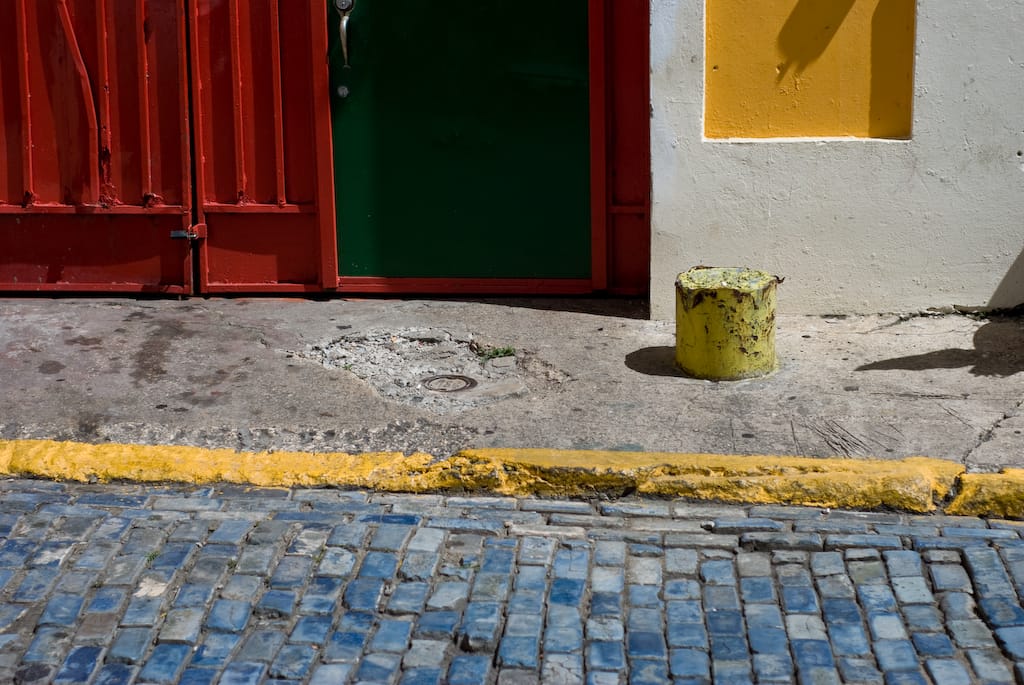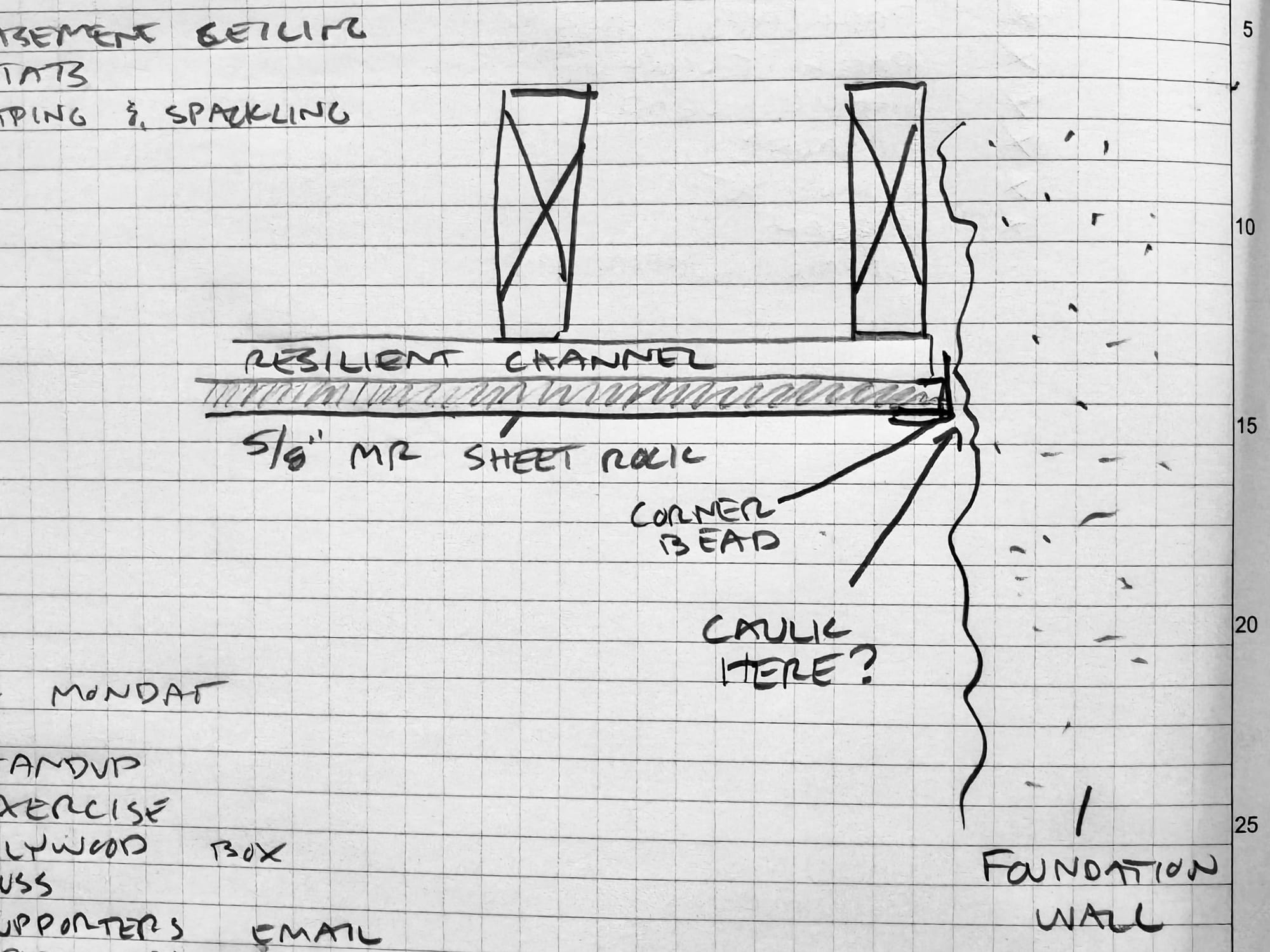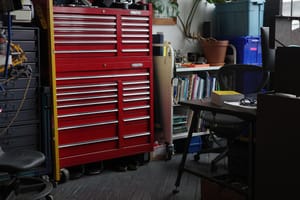In the early days this newsletter seems to have been sure about two things: That it should be useful, and that it should be self-aware. Whether I was fully aware of these things is a separate question; I’m often unaware of so many things, and there are aspects of those early issues which I now find utterly bizarre and can only imagine being the result of some deep misunderstanding on my own part.
But not all of the aspects are bizarre! The bulleted list of ostensibly thematically-linked thoughts, for one, is a powerful and flexible form of communication. And I think it deserves continued use here, especially on weeks like this one, when the part of my brain which thinks in paragraphs and chapters is occupied with other tasks.
PLANNING & STRATEGY.
Three things I’d like to take on this quarter:
- For years I offered readers of this newsletter “coffee on me,” a practice which became impractical as I had kids, hunkered down into COVID, and, to be frank, struggled a bit with my professional and social identity. The extent to which those factors are in the past is unclear; nevertheless, I’m considering opening up a few weekday mornings to walk-and-talks with readers of this newsletter. If you’re willing to commit to a rain-or-shine outdoor chat in Crown Heights, Brooklyn at 08:30, grab a slot here.
- I’d like to get out into the field and see a few factories – and write about them, potentially. If you work in a manufacturing or fabrication environment within train or driving distance of NYC, give me a holler; I’ll also be in San Antonio, Texas and Seattle, Washington later this year (and could probably find an excuse to make it to the SFBA as well).
- There are a few seminal texts on design, engineering, and labor which I own but have never fully read or never fully processed – books like The Machine that Changed the World, Why Buildings Fall Down, The Art of Doing Science and Engineering, A Pattern Language, and Working. These might not be exactly right for the Members’ Reading Group that we currently run; for one thing we pick books by popular vote there, and for another we tend to stick to newish nonfiction so that we can chat with the author once we’ve finished reading. But if you’d be interested in a slightly revised format (call it a Study Group), which focuses on a somewhat more canonical list of titles (i.e. books chosen at least partly on the whim of yours truly), reply to this email and let me know.
MAKING & MANUFACTURING.

- A cobble is a naturally occurring stone, “larger than a pebble and smaller than a boulder,” which can be used to pave streets by setting in cement or loose aggregate. A sett or Belgian block is a piece of stone, usually granite, which has been quarried and hewn into a roughly rectangular shape for use as a paving stone – an application which is often referred to (inaccurately) as “cobblestone.” If you picture in your mind a charming streetscape in Manhattan’s West Village, or perhaps the intensely rough sections of Paris-Roubaix, then you’ll be thinking of streets paved in sett.
The streets of Old San Juan, Puerto Rico, are paved with what appear to be blue-colored sett, but in fact they are fired bricks, called adoquines, which were manufactured in England and sent to Puerto Rico around 1890. Made of slag – the waste product of iron smelting – Old San Juan’s adoquines were originally marketed as “granitine;” their specifications can be seen in this (Spanish) research paper. They have become a tourist attraction in and of themselves – and, as the Puerto Rican poet Raquel Salas Rivera describes, they represent a knot (nudo) in Puerto Rican linguistic and colonial history, culturally specific and impossible to translate.
- In TW’s recent piece on animal fats and the invention of margarine, we included a photo of the oil presses at the oleomargarine department of Armour and Company. It turns out that Armour was a pretty significant venture. One of the largest meatpackers in Chicago, Armour developed a fairly diversified business, using slaughterhouse byproducts to make “glue, oil, fertilizer, hairbrushes, buttons, oleomargarine, and drugs.” Armour is defunct now (after being owned by, of all companies, the Greyhound Bus Corporation), but their products live on as parts of Smithfield Foods, ConAgra, and Dial Soap. Oh — and Dale Carnegie’s How to Win Friends and Influence People (which, prickly as I am, I found fairly insightful when I read it a little over a decade ago) was inspired by his time as an Armour sales rep!
MAINTENANCE, REPAIR & OPERATIONS.

I wrote last week about documentation, contextualizing my rather heady meditations with the type of assembly diagrams which I am now out of the practice of making. Who knows how many of you got to the part where I mentioned that what I actually want to document is my own home (and I am doing so, with a dozen or so similarly-minded folks, in the #only-home-projects channel of the SOW Members’ Slack), which is a hundred and twenty-five years old and seems to require constant maintenance. Its maintenance history and requirements are currently scattered throughout my life: recurring events bide their time in my calendar; pencil sketches are slowly smeared in the pages of my lab notebook; construction photos sit surrounded by pictures of my kids.
This system more or less works, at least when combined with my own willingness to drop everything to keep stormwater from filling up our cellar. But I suspect that for most people, a more effective system might consist of a couple pages of text in a word processor, filled mostly with the contact information for various service providers: painters, exterminators, that guy you called that once to haul away an old bathtub, only to see the same bathtub on the curb a block away from your home the next morning. My home certainly deserves a document like this, but it’s likely that the set of documents I’ll create will read more like a biography of a beautiful but flawed protagonist, written by someone who was at times their nemesis. I love my house, of course; I have lived here longer than anywhere other than my childhood home, and I feel a deep intimacy with its construction. But I fight with it, and it fights back, and the list of mistakes I’ve made in the process is at least as long as the list of improvements. And I think it will be useful – and a little fun – to document both the good and the bad in our relationship.
For how well I know my house, it remains a source of mystery to me. Buildings can, in some cases, behave almost like immortal beings; even our humble row home has now outlived at least two generations of human beings, and in spite of its many flaws I'd be surprised if its story is half over. How can I document the maintenance of something which seems likely to outlive my grandchildren? How do I respect the work that’s gone into my house so far, while also leaving room for new and unexpected mistakes to be made in the future?
I’m hoping that the answer is “a Github repo, filled mostly with markdown files and images,” but it’s kind of anyone’s guess. Either way, I’m planning to build that repo so that it can be easily forked, or ridiculed, by onlookers like you — or, you know, you could join SOW as a Member and help me build it in a way that better suits your needs <3
DISTRIBUTION & LOGISTICS.
- You know what’s pretty cool? The Libby app, which lets you rent audiobooks and ebooks from your local public library.
- Kris De Decker, of Low-tech Magazine, is rolling up his off-kilter blog posts and publishing them in thematically organized books. His most recent edition is Heating People Not Spaces. It is not available in the Brooklyn Public Library’s collection on the Libby app 🤷
- A report on the bike bus (bicibus) movement, in which parents and kids ride bikes to school in something of a peloton. I am extremely fond of this idea. It exploded in popularity during the pandemic, but the report notes key challenges to bicibuses' long term sustainability – including, prominently, volunteer burnout.
INSPECTION, TESTING & ANALYSIS.
- Nacirema (“American,” backwards) is a term used by anthropologists to distance themselves psychologically from the culture they’re discussing – namely American culture. The term originated from a 1956 paper, The Body Ritual among the Nacirema, which satirized aspects of American hygiene (dental work, face shaving, psychotherapy) as examples “of the extremes to which human behavior can go.”
I find this to be a compelling framework, for the reason that it might help challenge some deeply held assumptions I have about things with which I am personally involved. For instance, I might imagine a newsletter called “Krowfoepocs,” which does absurd things like comparing concrete to crayfish and thinks that it’s somehow romantic to do uncomfortable work on construction sites.
- Planet, the earth imaging startup that went public via a SPAC in 2021, is a public benefit corporation (PBC), with the purpose “to accelerate humanity toward a more sustainable, secure, and prosperous world, by illuminating environmental and social change.” I chatted with one former Planet engineer, who said that “for maybe half the people in the company, [Planet’s PBC status] was a source of some amount of pride.” But this person also said that being a PBC didn’t seem to affect their day to day work in a meaningful way, and that because Planet became both a public company and a public benefit corporation at the same time, it’s hard to separate how one or the other event changed the company’s culture.
This came up because I was talking with an SOW Member about organizational governance, and the ways that a group of people can direct themselves towards some set of values. The old school way to do this is to become a nonprofit, but that’s rather limiting (nonprofits aren’t owned by anyone, and if they dissolve, their assets must be transferred to another nonprofit or to the government). Plus, some people want to have their cake and eat it too – make profit and commit to a purpose other than profit. To achieve this, they can either become B Corp certified (which doesn’t require changing their legal structure; the certification is often compared to the Good Housekeeping Seal of Approval) or, if they’re formed in one of the forty US states that offer it, they can become a Public Benefit Corporation and add “PBC” to their corporate name.
I think PBCs are cool. In contrast to a C Corporation – which is what most people think of when they say “corporations” in a sinister tone – PBCs are explicitly allowed to consider things other than increasing shareholder value. Just as Planet is allowed to downplay shareholders in lieu of “accelerating humanity toward a more sustainable, secure, and prosperous world,” Kickstarter PBC’s mission allows them to focus on “bringing creative projects to life,” and Warby Parker’s certificate of incorporation (via their 2022 Impact Report) mandates, somewhat mutedly, that they “work toward positively impacting the communities in which [they] operate.” But beware: Like any other entity, a PBC can evolve, and as Andy Baio documented in detail with Ello, even a PBC’s charter can be made subordinate to other business pressures.
Tangentially related: In Money Stuff last week, Matt Levine wrote about some of the things shareholders might care about other than maximizing profit, and how “modern finance” might allow even publicly traded C corporations to take those into account. Note also, I suppose, that Kickstarter PBC is a SOW Business Member, and that I have long term personal and professional relationships with many current and former Kickstarter employees.
SCOPE CREEP.
- A short 2018 New Yorker piece on the legal nuances of gleaning, the practice of collecting crops which have been left behind after the harvest. See also The Gleaners, an 1857 French painting which I think I saw at the Met in about 2002.
- SNL’s spoof Alaska Airlines ad has a disguised McMaster-Carr catalog in it (0:53).
- Evil Mad Scientist, maker of beloved pen plotters, was acquired by Bantam Tools, the Otherlab spinoff which Bre Pettis acquired in 2017.
- I’m currently listening to Jay Owens’ Dust (for the SOW Reading Group) and Lydia Davis’ Essays One. I’m also reading W. Somerset Maugham’s Of Human Bondage and, though I’m ignorant to many of its references, Isaac Deutscher’s The Non-Jewish Jew and other essays. Lastly, I have History of the United States Rubber Company on my “shelf which I can very easily slip a book off of,” and I plan to slip it off (i.e. read it) soon.
Thanks as always to Scope of Work’s Members and Supporters for making this newsletter possible. For what it's worth I do legitimately want your feedback on this newsletter, whether you pay us or not – what you like, what you don’t like, what you want more and less of; simply reply to this email or send anonymous feedback here. Thanks to James, James, Craig, Nick, and Jeffrey for sending links this week.
Read the full story
The rest of this post is for paid members only. Sign up now to read the full post — and all of Scope of Work’s other paid posts.
Sign up now



